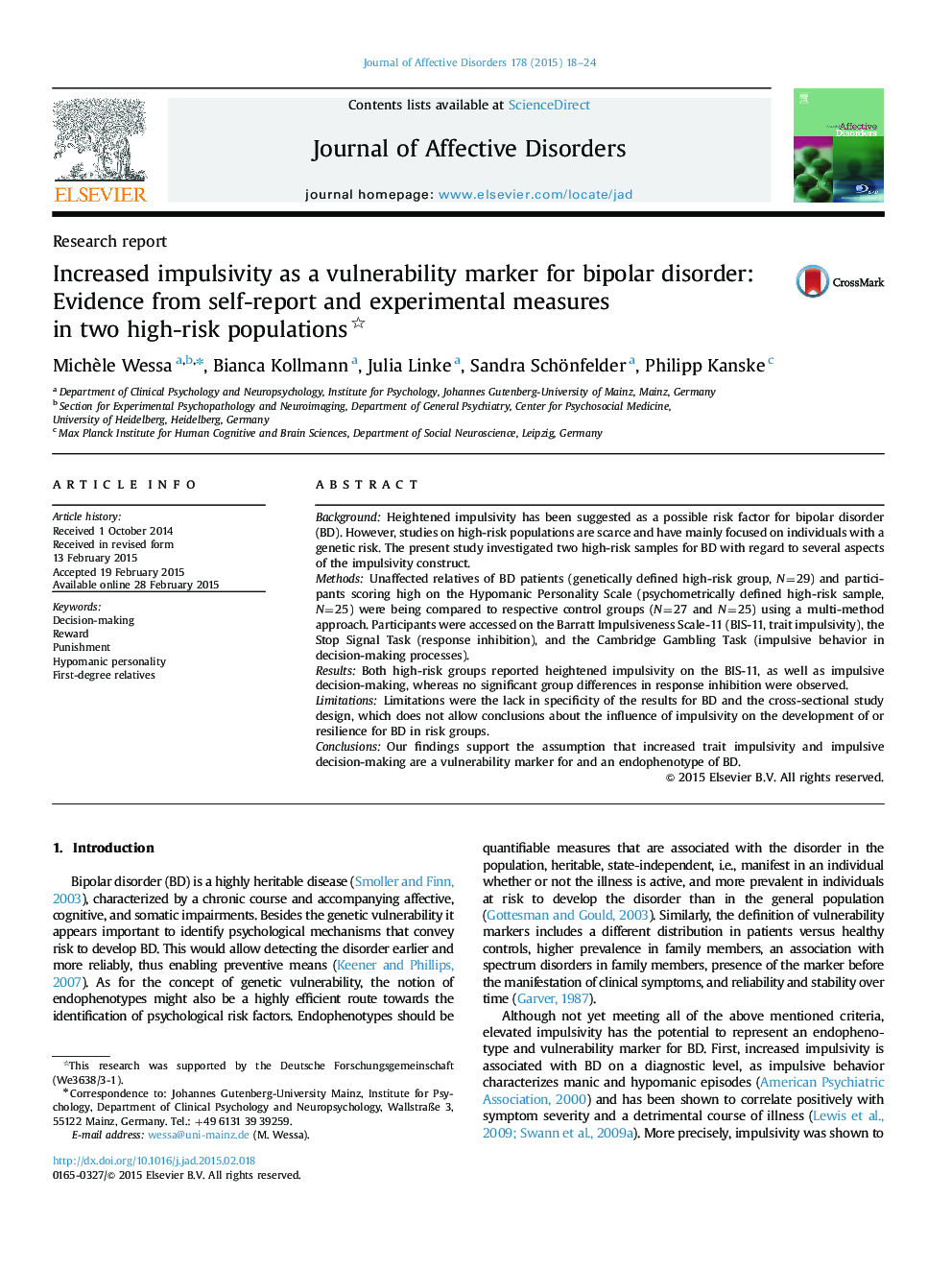| Article ID | Journal | Published Year | Pages | File Type |
|---|---|---|---|---|
| 6232059 | Journal of Affective Disorders | 2015 | 7 Pages |
BackgroundHeightened impulsivity has been suggested as a possible risk factor for bipolar disorder (BD). However, studies on high-risk populations are scarce and have mainly focused on individuals with a genetic risk. The present study investigated two high-risk samples for BD with regard to several aspects of the impulsivity construct.MethodsUnaffected relatives of BD patients (genetically defined high-risk group, N=29) and participants scoring high on the Hypomanic Personality Scale (psychometrically defined high-risk sample, N=25) were being compared to respective control groups (N=27 and N=25) using a multi-method approach. Participants were accessed on the Barratt Impulsiveness Scale-11 (BIS-11, trait impulsivity), the Stop Signal Task (response inhibition), and the Cambridge Gambling Task (impulsive behavior in decision-making processes).ResultsBoth high-risk groups reported heightened impulsivity on the BIS-11, as well as impulsive decision-making, whereas no significant group differences in response inhibition were observed.LimitationsLimitations were the lack in specificity of the results for BD and the cross-sectional study design, which does not allow conclusions about the influence of impulsivity on the development of or resilience for BD in risk groups.ConclusionsOur findings support the assumption that increased trait impulsivity and impulsive decision-making are a vulnerability marker for and an endophenotype of BD.
